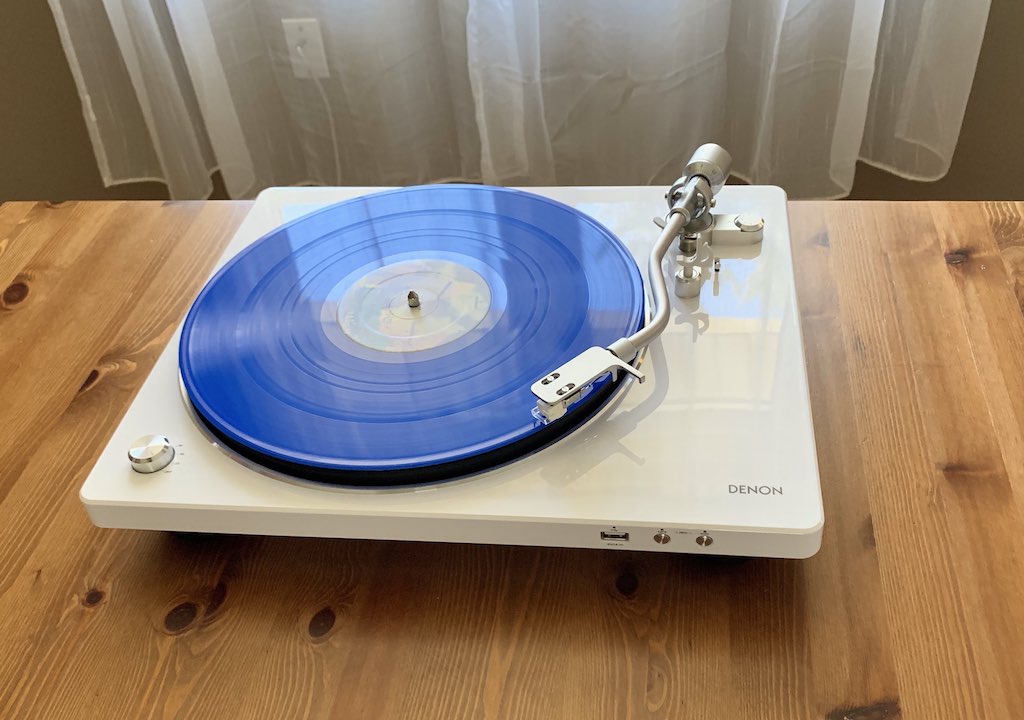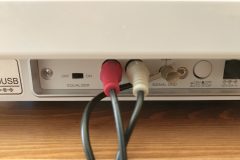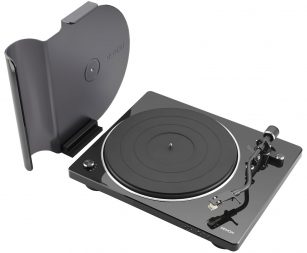
Denon has a long and storied history as a premium audio brand. The company was one of the pioneers of digital recording and released the world’s first commercial CD—but Denon has even more experience in records, a format that’s experiencing a big resurgence. The company began selling gramophones in 1910, phono cartridges in the 1960s and introduced its own turntables by 1971. I just wrapped up testing on one of its latest turntables, the Denon DP-450USB. Needless to say, with all those decades of experience, this is a pretty nice option for listening to your record collection (and digitizing it if you’re so inclined).
Easy setup, no tools and no experience required

The P-450USB is considered a mid-range turntable. In terms of setup, that means it’s not quite as simple as a beginner model (those often come fully assembled), but it’s more straightforward than most audiophile models.
I run through the setup in the accompanying video, but instructions are included in the box, you won’t need any tools or technical experience, and the entire process will likely take 10 minutes.
Flexible connectivity

This turntable has a switchable Phono EQ. That’s Denon’s term for a pre-amplifier. So you can connect the turntable the traditional way, using the PHONO input on an amplifier or receiver. Or, you can turn on the Phono EQ and connect it to the AUX input of stereo system or portable speaker—you’ll need to pick up a dual RCA to 3.5mm cable if you go that route, though.
Your records will sound great
The Denon DP-450USB is a looker of a turntable, with its glossy finish, slim-looking plinth (don’t worry, it’s actually quite solid and stable), and curved aluminium S-shaped tonearm.
But more importantly, records played on this turntable sound great as well. Remember, Denon has been making cartridges since the sixties, and it includes one of its most popular—the Denon DSN-85. The belt-drive motor is spinning a cast aluminum platter with a built-in speed sensor that keep wow & flutter to 0.10% while vibration-absorbing feet protect against external distortion from creeping in.
Denon DP-450USB turntable key specs
|
An interesting dust cover approach
Two things that you don’t want with a turntable are dust and vibration. Dust because any accumulation not only looks bad, it’s eventually going to get into the motor and other moving parts and cause problems. Vibration because the whole record playing process relies on a tiny diamond needle vibrating in the groove of a vinyl record, and any external vibration can result in distorted playback.
 Dust covers are important when not in use, but the first thing I do with any turntable is to physically remove it when playing a record. If the dust cover is mounted with a hinge, I remove the hinge during setup and simply set the cover in place when needed. This eliminates the risk of vibration from the plastic cover affecting the audio during playback.
Dust covers are important when not in use, but the first thing I do with any turntable is to physically remove it when playing a record. If the dust cover is mounted with a hinge, I remove the hinge during setup and simply set the cover in place when needed. This eliminates the risk of vibration from the plastic cover affecting the audio during playback.
Denon apparently feels the same way as I do about dust covers, and the DP-450USB has a very unique one. No hinge, it must be physically removed before playing a record, because it’s held securely in place by the record spindle. The company even throws in a weighted stand to hold the dust cover when not in use. It’s a clever approach that also adds some visual interest (just look at that uniquely curved cover).
The easiest digital recording ever
Having a USB port for digital recording of a record is a relatively common feature on modern turntables. Yes, streaming audio means there are tens of millions of tracks available to play on your digital devices, but there are still gaps in those online libraries. In particular, indie releases and 12-inch re-mixes are often tough to find in digital form. Don’t forget old recordings (this turntable can play 78 rpm records). Being able to digitize a record as it’s being played is a great way to get those rare or tough to find tracks onto your smartphone.

However … The process typically involves connecting the turntable to a PC using a USB cable. Software is usually required to manage the recording—and while manufacturers typically include that software in the turntable box, I’ve yet to find one that include a macOS version. The reality is that ripping your records as MP3s is often more trouble than it’s worth.
The Denon DP-450USB is the first turntable I’ve used that actually nails the digitization process. No fussing with cables or capture software, simply stick a thumb drive in the USB port on the front, cue up the song, then press the record button. There are even two buttons, one if you want an MP3 file, a second if you prefer WAV. I recorded a track, plugged the thumb drive into an iMac and the song was immediately available in iTunes.
This is USB recording I would actually use!
Recommendation? A great turntable, especially for collectors of rare vinyl

The Denon DP-450USB is a solid turntable, and a real step up if you’re moving from an entry-level turntable or record player. It sounds great, comes with a good cartridge (with upgrade potential) and it’s very stylish looking. You can connect it to an amplifier or receiver with a PHONO input, or switch on its Phono EQ and play records through a compact stereo system or portable speaker.
That’s all good, but what really sets it apart from most turntables is its incredibly easy USB recording feature. The Denon DP-450USB would make a great choice for anyone who loves listening to vinyl, but the built-in USB recording feature (and 78 rpm support) make it especially appealing to anyone with records that simply aren’t available on streaming music services.



